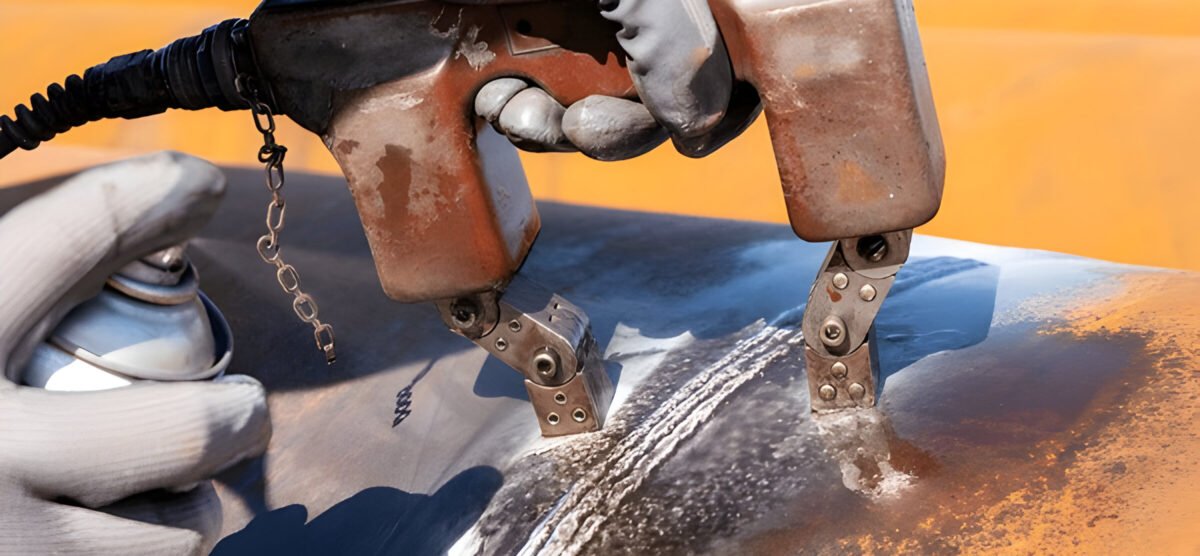Blogs

What is Non-Sparking Tools Material? A Comprehensive Guide
Introduction
Workplace safety is crucial—especially in industries where flammable hazards are present. Understanding what non-sparking tools material is can significantly reduce the risk of fires or explosions. These tools are vital in industries like oil and gas, mining, chemical plants, and more.
In this guide, we’ll explore:
- What makes a tool non-sparking
- Common materials used in non-sparking tools
- Benefits of using them
- How to choose and maintain these tools for maximum safety
What Are Non-Sparking Tools?
Non-sparking tools (also known as spark-resistant or spark-proof tools) are made from materials that don’t produce sparks when struck. This makes them ideal for hazardous environments where flammable gases, vapors, liquids, or dust are present.
Why Are They Important?
- No Sparks, No Fire: Prevent accidental ignition of flammable substances.
- Ideal for Confined Spaces: Especially where ventilation is poor, and gases can build up.
- Non-Magnetic: Safe around sensitive electronic equipment and medical devices.
Industries such as oil refineries, chemical manufacturing, and mining often mandate the use of non-sparking tools to meet safety regulations and protect workers.
Why Use Non-Sparking Tools?
Regular tools can create friction or impact sparks—dangerous in explosive environments. Non-sparking tools reduce these risks and bring many benefits:
Key Advantages:
🔥 Spark Prevention – Reduces the risk of fire or explosion.
✅ Regulatory Compliance – Meets industry safety standards.
🛠️ Durability – Made from high-quality materials for long-term use.
👷 Worker Protection – Enhances workplace safety and peace of mind.
Non-Sparking Tools Material: What Are They Made Of?
The answer to “what is non-sparking tools material?” lies in the specific non-ferrous metals and non-metals that do not produce sparks upon impact.
Common Materials:
| Material | Properties & Best Use |
|---|---|
| Plastic | Lightweight, non-magnetic, never sparks. Ideal near magnetic fields and in ATEX zones. |
| Brass | Durable, shiny finish, corrosion-resistant. Suitable for marine or decorative use. |
| Bronze | Conductive, tough, non-sparking. Common in mechanical and engineering work. |
| Aluminium-Copper | Lightweight, reliable. Great where weight is a concern. |
| Beryllium Copper | Strongest and most wear-resistant. Ideal for heavy-duty and industrial environments. |
These materials are chosen for their safety profile and specific advantages based on the work environment.
What Materials Are Used for Non-Sparking Tools?
Non-sparking tools are built to meet the demands of hazardous environments. Here’s a deeper look at the five most commonly used materials:
1. Plastic
- Non-magnetic and non-sparking
- Great for use around sensitive electronic or magnetic equipment (e.g., MRI machines)
- Best for lightweight tasks
2. Brass
- Durable with corrosion resistance
- Has an attractive shine, but often more expensive
- Common in marine and decorative applications
3. Bronze
- Non-sparking and conductive
- Excellent for engineering and general industrial tasks
- Resists wear and corrosion
4. Aluminium-Copper
- Lighter than other metal options
- Offers decent strength and spark resistance
- Used where tool weight matters (e.g., overhead work)
5. Beryllium Copper
- The strongest, hardest, and most durable
- Highly resistant to wear, corrosion, and heat
- Used in high-stress industries like aerospace, oil & gas, and military
How Are Non-Sparking Tools Made? (Tool Composition)
The composition of non-sparking tools involves careful alloying of metals and sometimes non-metals to ensure safety and performance.
For example:
- A beryllium copper wrench is ideal for heavy-duty applications.
- A plastic scraper is perfect for tasks around electrical equipment or magnetized fields.
Choosing the right material depends on:
- Nature of the task
- Risk level of the environment
- Required durability and weight
How to Maintain Non-Sparking Tools
Even the safest tools need proper maintenance to remain effective. Here’s how to care for them:
✅ Clean After Use
Remove dirt, oil, or contaminants that could react in flammable environments.
✅ Sharpen Carefully
Keep edges functional without compromising the spark-proof integrity.
Follow manufacturer guidelines.
✅ Avoid Acetylene Contact
Acetylene can react dangerously with copper-based alloys in the presence of moisture.
✅ Ensure Proper Ventilation
Keep work areas ventilated to reduce buildup of dangerous vapors and dust.
Where Are Non-Sparking Tools Used?
These tools are essential in industries where flammable hazards are present:
🛢️ Oil and Gas
🧪 Chemical Manufacturing
🏔️ Mining
🚢 Marine Industry
🧲 MRI and Medical Equipment Maintenance
⚡ Electrical and ATEX Environments
Conclusion
Non-sparking tools are essential safety equipment in industries where even the smallest spark can lead to catastrophic consequences. Understanding what non-sparking tools material is enables professionals to make informed decisions when selecting the right tools for hazardous environments. By choosing appropriate materials, such as brass, bronze, plastic, aluminium-copper, or beryllium copper, organizations can ensure a higher level of safety, maintain regulatory compliance, and protect their workforce from potential fire and explosion risks. Whether operating in a mine, refinery, chemical plant, or laboratory, investing in high-quality non-sparking tools is a proactive step toward creating a safer, more secure workplace.
Frequently Asked Questions (FAQs)
Q1. What is non-sparking tools material?
Materials like brass, bronze, plastic, and beryllium copper that don’t produce sparks during use.
Q2. Why are non-sparking tools important?
They prevent fire and explosion risks in flammable environments.
Q3. What materials are most common?
Plastic, brass, bronze, aluminium copper, and beryllium copper.
Q4. How do they work?
They avoid sparking through their non-ferrous, spark-proof composition.
Q5. Where are they used?
In oil refineries, chemical plants, mining, and magnetic/electronic-sensitive areas.
Q6. Are they expensive?
Some materials like beryllium copper cost more, but the safety benefits are invaluable.
Q7. How do you maintain them?
Keep clean, sharpen safely, avoid acetylene with moisture, and ensure proper storage.
Q8. Can they be used with acetylene?
Avoid using them near acetylene in moist environments to prevent hazardous reactions.




